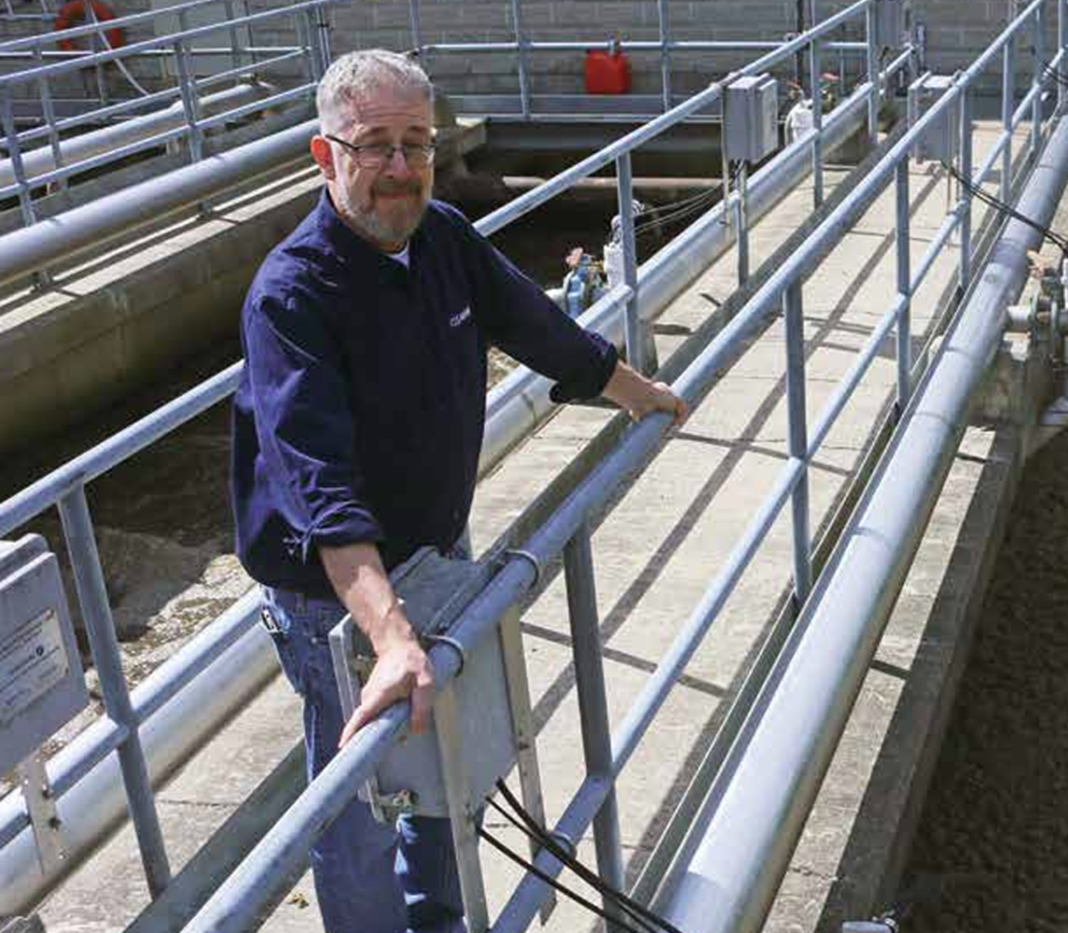Residents on Lake Kashagawigamog are raising the alarm over Dysart et al’s proposed sewage treatment plant expansion, believing it could impact water quality throughout the lake chain. The facility’s lead engineer, however, says he has no concerns, noting it’s one of the topperforming, environmentally-sound plants in the province.
John Puffer, a member of the Lake Kashagawigamog Organization (LKO), has been on the lake for close to 70 years. His grandmother purchased what is now known as Puffer Island in 1918, with his family maintaining a presence there ever since.
In a recent interview with The Highlander, he recalled how, as a young adult, he could swim and fish for lake trout almost anywhere on the lake. That’s not the case anymore – he said the lake’s makeup has drastically changed over the past 50 years, with a steady decline in water quality.
When the township proposed its initial expansion to the plant, located off County Road 21 between Head and Grass lakes, in 1995, he was one of 150 people to attend a meeting at the Wigamog Inn – it was there the LKO was formed.
“We were concerned about the impacts on the lake then and are even more so now, given the negative changes we’ve seen in the 30 years since,” Puffer said, noting what used to be “sandy bottoms” on the lakebed has made way for murkier silt. Algae-related scares are a common feature of summer now, Puffer added.
Dysart pursuing a 50 per cent expansion
The group is mobilizing again with the township pursuing a 50 per cent expansion to its treatment facility.
John Levie, vice president of engineering at Clearford Water Solutions, which operates the plant on behalf of Dysart, said an application to increase the amount of treated water put back into the lake chain, from 1,575 cubic metres per day to 2,375, will be submitted to the Ministry of Environment, Conservation and Parks (MECP) in September.
The project is estimated to cost $12-15 million and would allow the township to add about 810 new connections to its sewage system. Levie said the proposal mirrors a phase-two expansion the Ontario government approved in the 90s.
On paper, the facility is operating at capacity, meaning the township can’t approve any further in-town development until it’s expanded. In reality, he said water flows are about 73-75 per cent of what the plant is designed to manage, typically seeing between 1,000 and 1,200 cubic metres on an average day.
When it comes in, the liquid is a light-brown colour, like that of chocolate milk. It goes through a five-step treatment system, where large solids and floatables such as wipes and toilet paper and miniscule nutrients like carbon, nitrogen and phosphorous are removed. The treated water is then flowed back into the lake.
Water quality a concern
Lance Payne, an LKO member and chair of the group’s water quality and development committee, said a recent survey of LKO members showed 95 per cent are concerned about water quality on the lake.
“We know this expansion is to facilitate a new residential development off County Road 21, near to Grass Lake, which feeds into Lake Kash. With the number of units being talked about (at least 100), it will be high-density and so we feel it’s going to put even more stress on our struggling lake,” Payne said.
He stressed the lake association isn’t opposing the expansion but wants to ensure the township considers all possible sideeffects and alternatives before committing.
Puffer said he hasn’t seen any studies over the past 30 years that can definitively say whether the plant’s original expansion has had a negative impact on the lake, but he does have water analysis from U-Links that shows the lake chain contains “concerning” levels of phosphorous and ammonia.
During last year’s monitoring, U-Links found three spots on Lake Kash where concentrated ammonia levels exceeded limits set out by MECP. Last fall, researchers recorded ammonia levels of 0.0232 milligrams per litre, 0.022 mg/l, and 0.0263 mg/l – all higher than the 0.019 mg/l limit. On Head Lake, phosphorous levels reached 0.01225 mg/l in the spring and 0.01095 mg/l in the fall. These were both higher than the 0.01 mg/l limit.
Ammonia is toxic to fish and other aquatic life and can cause excessive algae and plant growth. Phosphorous is a growth tank for algae and aquatic plants in the water.
Levie said he doubts those levels have anything to do with the plant, saying it “runs beautifully… this place has got the most stringent nutrient limits in the area, we never see any problems.
“There are two reasons this plant is working so well – one, it was designed very well initially and the process is easy for operators to manage and maintain. The other is the type of properties – it’s mostly residential here. A lot of municipalities have a large commercial and industrial flow, which is typically harsher or [generates] more volume.”
He said the treatment process removes 98 per cent of the carbon, 98-99 per cent of the nitrogen/ammonia, and 97-98 per cent of the phosphorous that comes in.
Staff test the water weekly, with Levie saying he hasn’t seen any major issues in his 21 years at the site. Per the MECP, the Environmental Compliance Approval (ECA) for nitrogen/ammonia is 5.0 mg/l, with phosphorous at 0.2 mg/l.
Looking at annual data stretching back to 2021, Levie said the highest level of nitrogen/ammonia was recorded from January to August of 2024, at 0.06 mg/l, and the highest level of phosphorous in 2022 at 0.05 mg/l. This was the equivalent of 1/1,400,000th tablespoons per cup, the engineer said.
Levie said he was recently speaking with a colleague who said ash from forest fires being deposited into lakes is likely a big contributor to declining water quality. So too runoff from properties with mowed lawns, aging/failing septic systems and salt/other contaminants used for road maintenance.
“Then there’s the increased boat traffic and added development around the lakes, which are also much more likely [to impact water quality],” Levie said.
Next steps
After reading into membrane bioreactor technology, which uses micro or ultra filtration, similar to reverse osmosis, to separate solid and liquid waste, Puffer feels the township should investigate that – even if it comes with a hefty price tag.
Levie said that sort of build would add another $10 million to the project without bringing any substantial benefits.
“The way I look at it is at my house, I can add insulation to improve my energy efficiency. I can spend thousands without getting any noticeable return. These aren’t my tax dollars, I make a recommendation based on sound engineering principles, but if it was my money I wouldn’t spend it there. It’d be like buying spinner rims on a Corvette for winter driving – doesn’t make sense and there are no major performance benefits.
“You’d be better off investing that money to address other issues contributing to decreased water quality,” he said.
Levie said he expects a response from the ministry on the pre-consultation application in the first quarter of 2026. If approved, the project will move into detailed engineering for the mechanical and structural expansion, which will take about a year. From there, an application can be submitted to amend the environmental approval for the plant, which is a 12-14 month process. Once that’s back, the project can go to tender for construction.
Levie said he wants to conduct a “stress test” of the system – holding back sewage and feeding at a fixed rate to see how it reacts to increased loading – before submitting a final application, believing there’s potential to land an additional 10-15 per cent in capacity.
That could be important down the road, with Levie stating there will be no more physical room to expand at the current site.
“That would buy the township more time before it has to start looking at additional land and additional treatment options,” he said.





